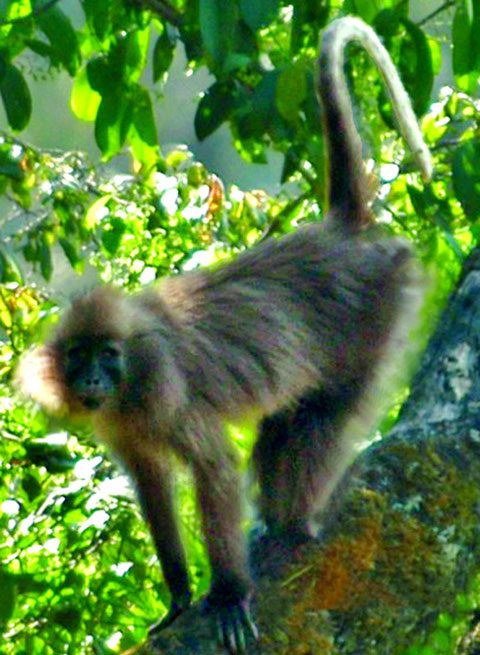If you're a pessimist, the primate known as the "Kipunji'"discovered just three years ago, is already bordering on extinction.
If you're more of an optimist, you may think that its small numbers are why it was never discovered until recently so 1,117 of them are nothing to be alarmed about.
The Wildlife Conservation Society is in the alarm business so they're saying that the first-ever census of the forest-dwelling primate showing 1,117 individuals, according to a study released in the July issue of the journal Oryx, is worrisome.

Discovered in 2005, the kipinji made headlines again in 2006 when DNA analysis revealed that the species represented an entire new genus of primate; the first since 1923.
The population estimate was the result of more than 2,800 hours of field work by WCS scientists in the Southern Highlands and Udzungwa Mountains in Tanzania where the kipunji was discovered. The team found that the monkey's range is restricted to just 6.82 square miles (17.69 square kilometers) of forest in two isolated regions.
The authors also discovered that much of the monkey's remaining habitat is severely degraded by illegal logging and land conversion. In addition, the monkey itself is the target of poachers. Because of these combined threats, WCS proposes that the kipunji should be classified by the World Conservation Union (IUCN) as "critically endangered" – which means it is threatened with extinction in the wild if immediate conservation action is not taken.
"The kipunji is hanging on by the thinnest of threads," said Dr. Tim Davenport, Tanzania Country Director for the Wildlife Conservation Society. "We must do all we can to safeguard this extremely rare and little understood species while there is still time."
Along with the IUCN designation, WCS is investing in the protection and restoration of the kipunji's remaining habitat and local conservation education of local people to help safeguard remaining populations.




Comments